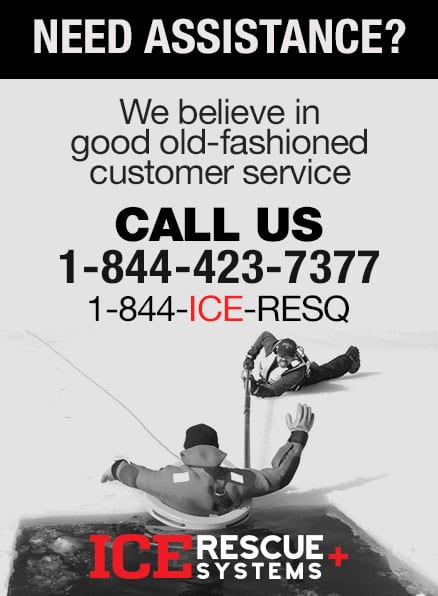With the winter season approaching, it brings with it freezing temperatures that in turn will affect our lakes, ponds and moving waterways and they will begin to develop ice. People and pets are drawn to this frozen water for various reasons. The question we must ask is, will your department be prepared to make an ice rescue and stay safe and protected while doing it, should the person fall through the ice?
Ice Rescue Systems will be covering several aspects to make sure your department stays ahead of the game and is prepared to make an ice or water rescue. Over the next few months we will be giving helpful tips, with eye opening information that will not only make you safer, also better prepared and potentially better equipped.
We encourage all departments to take their ice rescue equipment out of summer storage and inspect it thoroughly and take inventory. A lot is dependent upon how carefully your equipment was prepared and packaged prior to storing in the off season. You may find upon further inspection of your equipment, that replacement of some or all may become necessary.
Let’s take a look at your PPE (personal protective equipment), your PPE may consist of suits, helmets, harnesses, ice cleats and ice awls. We will start with your ice rescue suit, an absolute necessity when performing an ice rescue. There are several areas to carefully consider and inspect on your ice rescue or dry-suit. Inspect any latex, silicone, or neoprene seals. You must check the overall condition of the material, its integrity, making sure it is without any stress areas or holes. If your suit has suspenders, make sure they are in place and have not been ripped from the glued fabric. Make sure the stitching is still intact and all glued areas are secure. Double check to make sure rodents haven’t nibbled and feasted on your suit.
Now, let’s move on to the zipper, the zipper is one of the most expensive components of your suit. Make sure you have a metal zipper and not a plastic zipper. Plastic zippers are typically associated with the “man overboard suits” typically referred to as “gumby suits.” Visually inspect the zipper. Has the zipper been bent or broken? Are there any missing teeth? Now we need to dress the zipper with paraffin wax. For the romantics in your department, have them bring in used dinner candles. There are many acceptable ways to do this, but there are a few areas of the zipper that should not get waxed. One major area is the channel between the teeth, to avoid getting wax in this channel it is best to wax the sides of the zipper and not directly on the top of the zipper. Make sure the zipper-pull moves freely on the zipper. Observe any unraveling of the zipper fabric on the outer edge of the zipper. Should you find any tiny unraveled fabric fibers on the outside of the “zipper channel” simply burn them off to prevent further unraveling, this method will prolong the life of the zipper. Once the outside, the inside and the zipper have been addressed we recommend doing a pressure test. The pressure test will ensure or determine if there are any holes or ruptured seams that may potentially leak.
Ice Rescue Systems strongly encourages you to call us to learn more about simple tips that will better prepare you for the ice rescue response.


